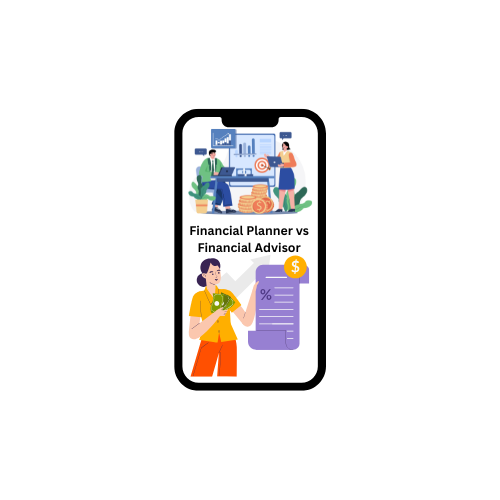Expansionary fiscal policy refers to a set of government measures aimed at stimulating economic growth, especially during periods of economic downturn or recession. This approach involves increasing government spending, reducing taxes, or both, to boost aggregate demand and economic activity. By injecting more money into the economy, expansionary fiscal policy seeks to encourage consumer spending and business investments, which can lead to higher production, job creation, and overall economic improvement. For example, during a recession, the government might increase public infrastructure projects or cut income taxes to put more money into the hands of consumers and businesses. The goal of these policies is to counteract declining economic performance and support a recovery, ultimately helping to reduce unemployment and stabilize the economy. However, while effective in the short term, expansionary fiscal policies can lead to increased government debt and potential inflationary pressures in the long run, which requires careful management and consideration of future economic impacts.
What Is Expansionary Fiscal Policy?
Expansionary fiscal policy is a set of deliberate government actions designed to boost economic activity, especially during periods of economic slowdown or recession. This policy is implemented through a combination of increased government spending and tax reductions aimed at stimulating aggregate demand. By raising government expenditures on public projects, such as infrastructure development or social programs, and lowering taxes for individuals and businesses, expansionary fiscal policy puts more money into the economy. This increase in spending and disposable income encourages consumer consumption and business investment, which can lead to higher demand for goods and services, increased production, and job creation. The primary objective of expansionary fiscal policy is to counteract economic downturns by invigorating economic growth and reducing unemployment. While it can effectively stimulate the economy in the short term, expansionary fiscal policy can also lead to higher government deficits and debt, and potentially contribute to inflation if used excessively. Balancing these outcomes requires careful consideration of both immediate economic conditions and long-term fiscal sustainability.
Key Aspects of Expansionary Fiscal Policy
- Increased Government Spending: Funding for public services, infrastructure projects, or social programs to boost economic activity.
- Tax Cuts: Reductions in personal or corporate taxes to increase disposable income and encourage spending and investment.
- Economic Stimulus: Measures designed to enhance consumer demand and business growth.
- Short-Term Goals: Aimed at reducing unemployment and fostering economic recovery during a recession.
- Long-Term Considerations: Risks include higher national debt and potential inflationary effects.
Historical Examples Of Expansionary Fiscal Policy
Expansionary fiscal policy has been employed throughout history to counter economic recessions and spur growth, with several notable examples illustrating its impact. One prominent instance is the New Deal implemented by President Franklin D. Roosevelt during the Great Depression of the 1930s. Faced with severe economic contraction and high unemployment, Roosevelt’s administration increased government spending on public works projects, social welfare programs, and financial reforms. This approach aimed to revive the economy by creating jobs, providing relief to struggling Americans, and reforming the financial system to prevent future crises. Another significant example is the Economic Stimulus Act of 2008 introduced by President George W. Bush in response to the Great Recession. This policy included tax rebates for individuals and increased government spending on various programs to boost consumer spending and stabilize the financial sector. More recently, the American Rescue Plan Act of 2021, signed by President Joe Biden, was designed to address the economic impact of the COVID-19 pandemic. It included direct payments to individuals, extended unemployment benefits, and increased funding for vaccination efforts and public health. These historical examples demonstrate how expansionary fiscal policy can be used to stimulate economic activity, provide immediate relief during downturns, and set the stage for recovery and growth. While each case had varying degrees of success, they collectively illustrate the role of government intervention in managing economic cycles and promoting stability.
How Does Expansionary Fiscal Policy Work?
Expansionary fiscal policy works by using government spending and tax adjustments to boost overall economic activity and counteract periods of economic downturn. When the government adopts this policy, it typically increases public expenditures on projects such as infrastructure, education, and healthcare, which directly injects money into the economy. This increase in government spending leads to the creation of jobs and increased demand for goods and services. Simultaneously, the government may lower taxes for individuals and businesses, which puts more disposable income in the hands of consumers and reduces the financial burden on companies. This combination of higher public spending and lower taxes stimulates consumer spending and business investments, which in turn drives economic growth. The increased demand for products and services leads to higher production levels, which can create jobs and reduce unemployment. Additionally, higher income levels can lead to greater consumer spending, further boosting economic activity. However, while expansionary fiscal policy can effectively stimulate the economy in the short term, it can also lead to increased government debt and potential inflation if not managed carefully. The success of this policy depends on the right balance between immediate economic stimulation and long-term fiscal sustainability.
Key Mechanisms of Expansionary Fiscal Policy
- Increased Government Spending: Direct investment in public projects and services to create jobs and boost demand.
- Tax Reductions: Decreases in personal and corporate taxes to increase disposable income and encourage spending.
- Economic Stimulus: Boosts consumer spending and business investment, leading to higher production and job creation.
- Short-Term Benefits: Addresses economic slowdowns by stimulating growth and reducing unemployment.
- Long-Term Considerations: Risks include increased government debt and inflation if the policy is not carefully managed.
Main Tools Of Expansionary Fiscal Policy
The main tools of expansionary fiscal policy are government spending and taxation adjustments, both designed to stimulate economic growth during periods of economic slowdown. Government spending involves increasing expenditures on public projects, such as infrastructure development, healthcare, and education, which directly injects money into the economy, creates jobs, and boosts demand for goods and services. For instance, funding for new roads, bridges, and schools not only generates employment but also enhances the productive capacity of the economy. Taxation adjustments involve lowering taxes for individuals and businesses to increase disposable income and incentivize spending and investment. Reducing personal income taxes puts more money in the hands of consumers, encouraging them to spend more, while cutting corporate taxes can lead businesses to invest in expansion, research, and development. Additionally, transfer payments, such as unemployment benefits and welfare programs, can be increased to provide immediate financial support to those affected by economic downturns, further stimulating consumer spending. Together, these tools aim to increase aggregate demand, support economic activity, and mitigate the impacts of recessions. While effective in boosting short-term economic performance, these measures must be balanced against potential long-term effects, such as rising government debt and inflationary pressures.
Key Tools of Expansionary Fiscal Policy
- Government Spending: Increased investment in public projects and services to create jobs and stimulate demand.
- Tax Cuts: Reductions in personal and corporate taxes to increase disposable income and encourage spending and investment.
- Transfer Payments: Increased unemployment benefits, social security, and other forms of direct financial support to boost consumer spending.
- Economic Stimulus Packages: Comprehensive measures combining spending and tax reductions to support overall economic growth.
Benefits Of Expansionary Fiscal Policy
Expansionary fiscal policy offers several key benefits that can help stabilize and stimulate the economy, especially during periods of economic downturn. Here’s a detailed look at these advantages:
- Stimulates Economic Growth: By increasing government spending and cutting taxes, expansionary fiscal policy boosts overall economic activity. Increased public investment in infrastructure projects, such as roads and schools, generates jobs and stimulates demand for goods and services, which can lead to higher economic growth.
- Reduces Unemployment: Increased government spending and lower taxes lead to higher consumer demand and business investment. This increased economic activity often results in job creation, helping to reduce unemployment rates during recessions.
- Boosts Consumer Spending: Tax cuts and increased transfer payments, such as unemployment benefits and welfare programs, put more money in the hands of consumers. With higher disposable income, individuals are more likely to spend on goods and services, further driving economic growth.
- Encourages Business Investment: Lower corporate taxes and increased government contracts for public projects provide businesses with more resources and incentives to invest in new ventures, expand operations, and hire additional employees.
- Supports Economic Recovery: During economic downturns, expansionary fiscal policies can help mitigate the effects of the recession by stimulating aggregate demand and accelerating the recovery process. This proactive approach can shorten the duration and severity of economic slumps.
Risks Associated With Expansionary Fiscal Policy
While expansionary fiscal policy can effectively stimulate economic growth and support recovery, it also carries several significant risks and potential downsides. Here are the detailed risks associated with this approach:
- Increased Government Debt: Expanding fiscal policies typically require increased government spending or reduced taxes, which can lead to higher budget deficits and rising national debt. Over time, this debt may become unsustainable, leading to higher interest payments and potential future fiscal constraints.
- Inflationary Pressures: By increasing demand through higher government spending and tax cuts, expansionary fiscal policy can lead to inflation, where the general price level of goods and services rises. If demand exceeds the economy’s productive capacity, it can cause prices to increase, reducing purchasing power.
- Crowding Out of Private Investment: When the government borrows to finance increased spending, it may drive up interest rates, which can make borrowing more expensive for businesses and individuals. This “crowding out” effect can stifle private investment and slow down long-term economic growth.
- Diminished Policy Effectiveness Over Time: The effectiveness of expansionary fiscal policies can diminish over time. Initially, increased government spending and tax cuts may boost economic activity, but if not managed carefully, the long-term impacts can lead to inefficiencies and reduced returns on investment.
- Potential for Long-Term Economic Imbalances: Sustained use of expansionary fiscal policy can create economic imbalances, such as large budget deficits or an overheated economy. These imbalances can require future austerity measures, which might negatively impact economic growth and public welfare.
- Dependence on Short-Term Stimulus: There is a risk that temporary measures, like stimulus packages, might be used as a substitute for more fundamental economic reforms. This reliance on short-term fixes can prevent addressing structural issues in the economy that require more comprehensive solutions.
Conclusion
Expansionary fiscal policy is a powerful tool for governments seeking to stimulate economic growth, reduce unemployment, and stabilize the economy during periods of recession or economic downturns. By increasing government spending on public projects, reducing taxes, and providing transfer payments, this policy aims to boost aggregate demand, enhance consumer and business confidence, and drive economic recovery. Historical examples, such as the New Deal during the Great Depression and the American Rescue Plan during the COVID-19 pandemic, demonstrate how these measures can effectively address severe economic challenges and foster recovery. However, while expansionary fiscal policy can produce significant short-term benefits, including job creation and economic growth, it also carries risks that must be carefully managed. These include the potential for increased government debt, inflationary pressures, and the crowding out of private investment. Moreover, the effectiveness of these policies can wane over time, and reliance on short-term fixes may delay necessary structural reforms. Therefore, while expansionary fiscal policy is essential for addressing immediate economic issues, it must be implemented with a balanced approach that considers both short-term gains and long-term fiscal health. Effective use of this policy requires a strategic vision that integrates immediate economic stimulus with sustainable fiscal practices to ensure both short-term recovery and long-term economic stability.






